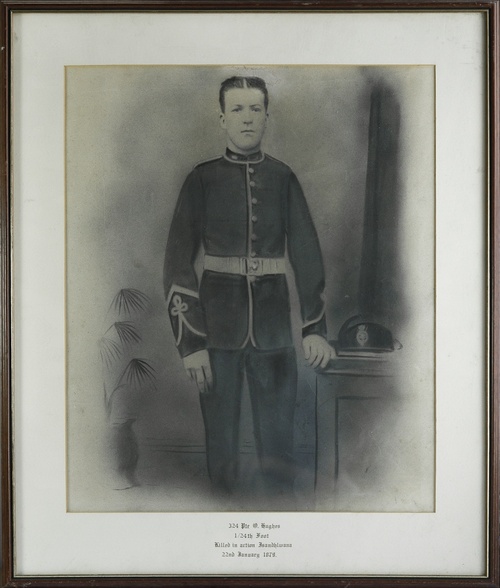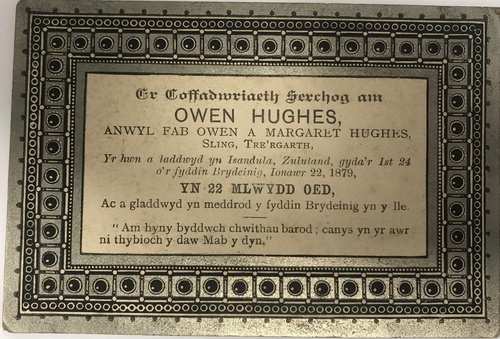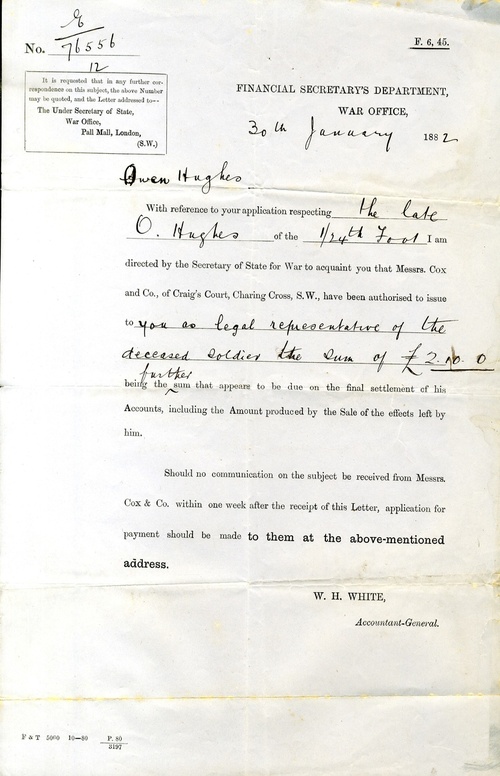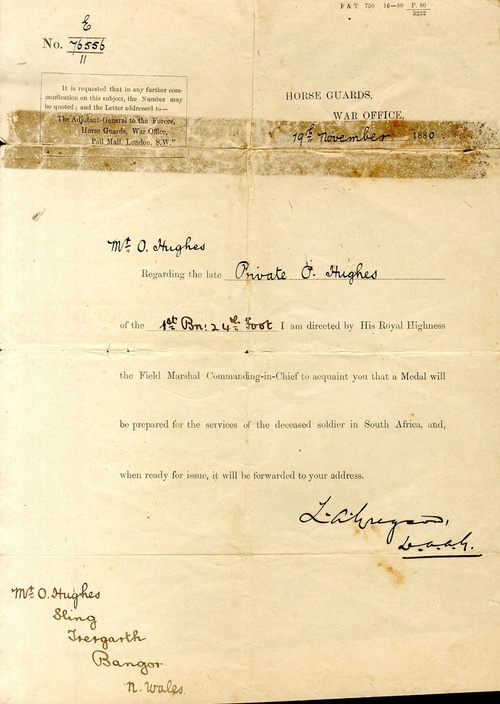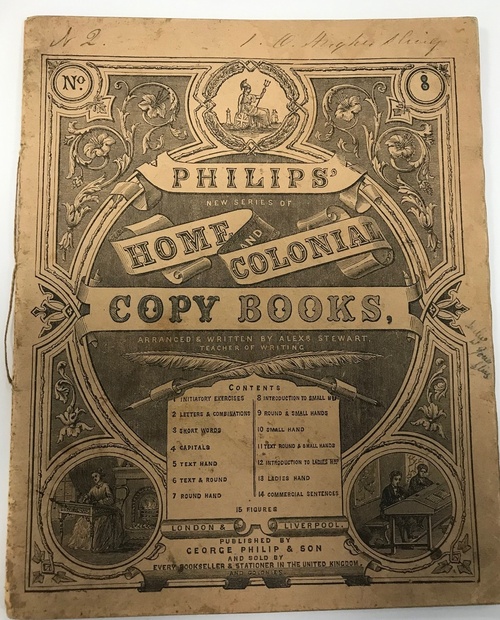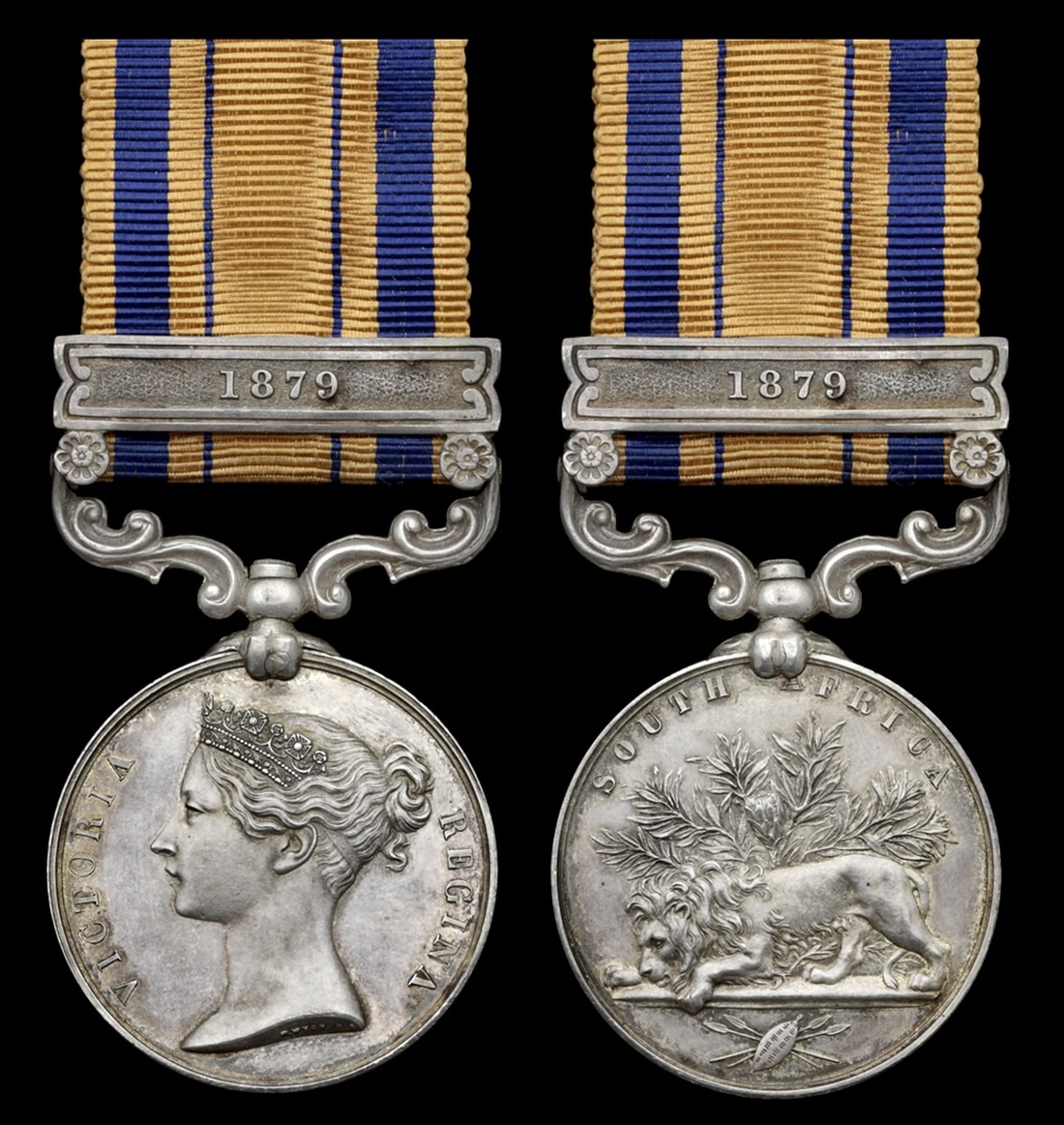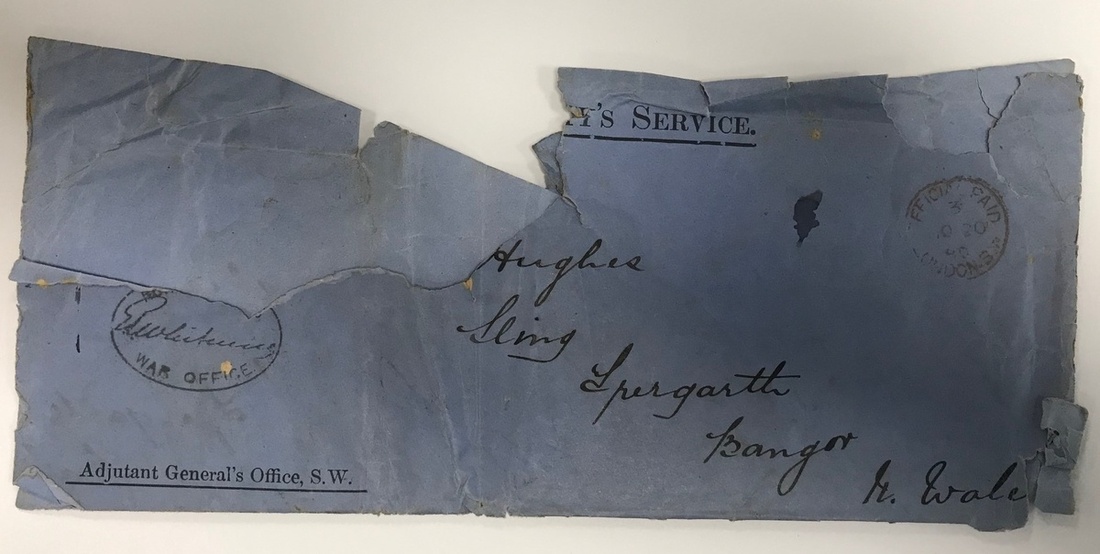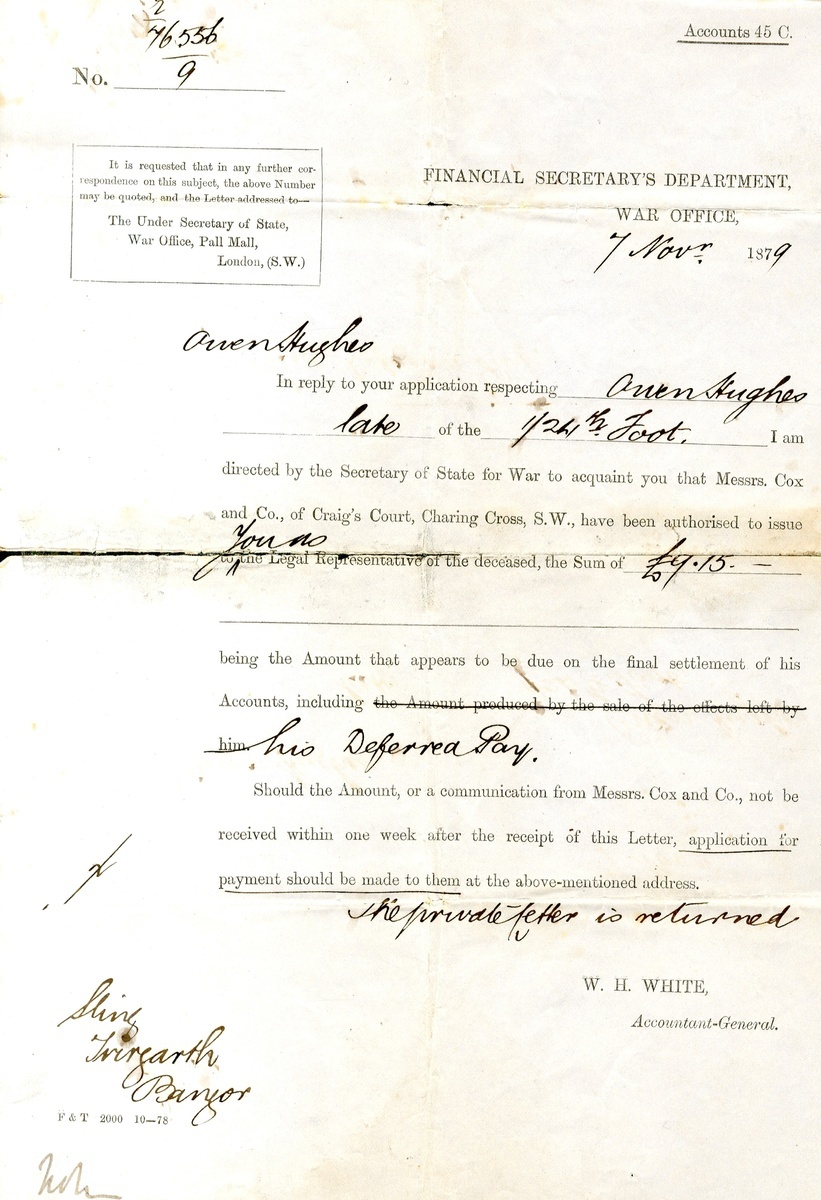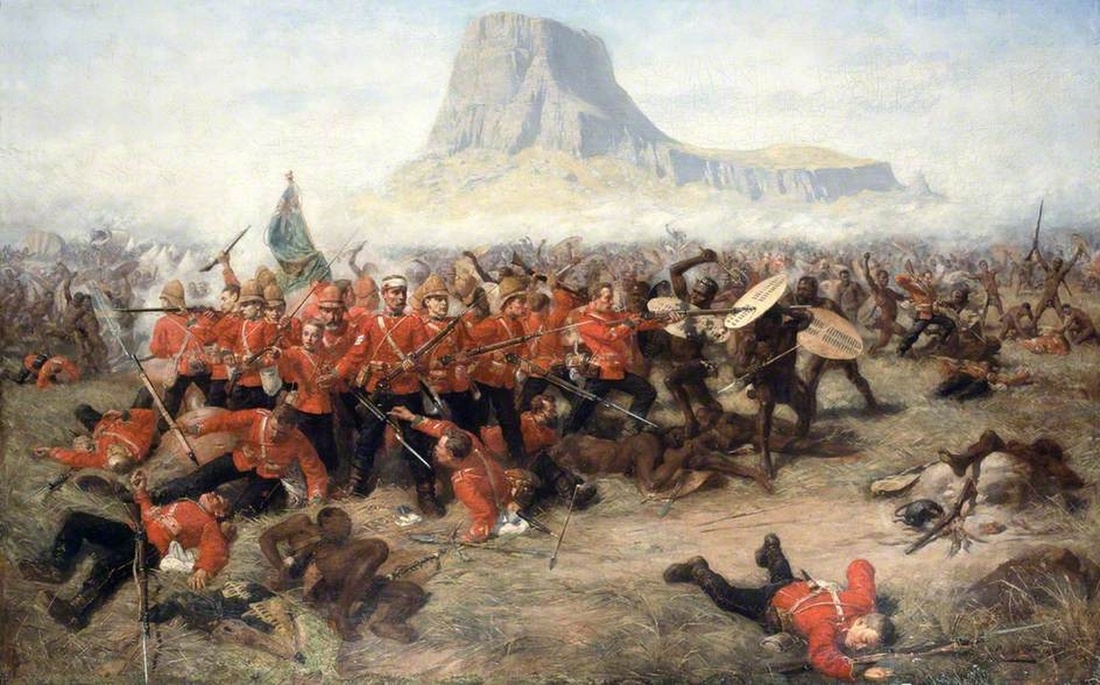Auction: 22003 - Orders, Decorations and Medals
Lot: 61
In a few seconds we distinctly saw the guns fired again, one after the other, sharp. This was done several times – a pause, and then a flash – flash! The sun was shining on the camp at the time, and then the camp looked dark, just as if a shadow was passing over it. The guns did not fire after that, and in a few minutes all the tents had disappeared.'
The well-documented Zulu War Medal awarded to Private O. Hughes, 1st Battalion, 24th (2nd Warwickshire) Regiment of Foot, who was Killed in Action at the disastrous Battle of Isandlwana on 22 January 1879
South Africa 1877-79, 1 clasp, 1879 (324 Pte O. Hughes. 1/24th Foot.), about extremely fine
Medal and archive acquired directly from the family in the late 1970's; this is the first occasion it has appeared at public auction and is likely one of the most complete original archives of this type relating to a Private Soldier killed at Isandlwana.
Owen Hughes is confirmed upon the Medal Roll with correct entitlement to this Medal and Clasp, also noted as having been Killed in Action with the 1st Battalion, 24th Foot. The son of Owen and Margaret, of Sling, a small village in north Wales, Hughes enlisted at Caernarfon on 30 June 1874 (giving his age as 19) and in the space of a few short years was to soon find himself on active service in South Africa for the Anglo-Zulu War.
Opening Moves
Both battalions of the 24th participated in the campaign (each fielding six companies) with the 1st Battalion forming the principal element of Number Three Column, which was under the overall command of Colonel Richard Glyn of the 1st/24th: therefore Brevet Lieutenant-Colonel Henry Pulleine was appointed to command in his stead.
Upon crossing the Buffalo River on 11 January, the column (accompanied by the Commander-in-Chief, General the Lord Chelmsford) found itself pitching camp nine days' later at the base of a prominent feature - the hill at Isandlwana. Chelmsford, eager to bring the campaign to a swift conclusion, departed at dawn on 22 January with half the column's strength (some 2,800 men) leaving behind Pulleine with approximately 1,300 men - five companies of the 1st/24th, one company of the 2nd/24th, 700 men of the Natal Native Contingent, two 7-pdr artillery pieces and a rocket battery.
Battle and Defeat
Failing to take any defensive measures to secure the camp, Pulleine's force was subsequently surprised by a vast Zulu army totalling some 20,000 warriors which, by additionally using the terrain to their advantage, swept forward to the attack using their traditional 'Horns of the Buffalo' strategy - a central advance supported by encircling forces on both flanks. Pulleine deployed the 24th Foot some way in advance of the camp in an extended firing line, aiming to subdue the Zulus with superior firepower - the young Private Hughes must have been one of those men in the line; what he likely thought and felt at that moment defies description.
For at least an hour, the British held the Zulu warriors at bay, inflicting significant casualties with their powerful Martini-Henry rifles and aided by support from the two 7-pdr guns from N/5 Battery Royal Artillery. However, as the mounted force (commanded by Colonel Anthony Durnford) began to withdraw in the face of mounting numbers of Zulus, this exposed the right flank of the British infantry firing-line; G Company (2nd/24th) was swiftly overrun and the remainder also began a withdrawal, loading and firing as they went, back towards the camp. However, by this point the Zulu encirclement of the position had almost been completed and the remains of the British force were left with no option but to either try to fight their way out or fight to the death - the result has subsequently been recorded as one of the most famous 'Last Stands' in British military history, immortalised in paintings, books, and the 1979 major motion picture 'Zulu Dawn' starring Peter O'Toole and Denholm Elliot amongst many other household names.
Of the 1,800 men at Isandlwana over 1,300 of them were killed; the bodies of the slain were afterward buried in mass graves on the battlefield, their last resting places still marked to this day by white-painted stone cairns; Private Owen Hughes is amongst them.
To be sold with the following archive material:
(i)
The box of issue for his Medal, his details written on ink to the lid and including the Royal Mint outer envelope.
(ii)
The Registered Post envelope in which the medal was posted to his father in north Wales.
(iii)
Hughes's school 'Home and Colonial' Copy-Book, annotated with 'Began 27th of November 1868' to the inside front over, the remainder of the book full and complete with examples of his handwriting in ink.
(iv)
A poignant Memorial Card, in Welsh, 'In Loving Memory of Owen Hughes', stating the recipient being killed at Isandula [sic] aged 22 and being buried in a 'British Army grave'.
(v)
Letter to Mr O. Hughes (father of the recipient) from the Financial Secretary's Department of the War Office, dated 7 November 1879, confirming the sum of £9.15s of Deferred Pay being sent to him.
(vi)
A letter, dated 18 November 1879, enclosing a Post Office Order for the above amount minus 11d post.
(vii)
A letter to Mr O. Hughes from Horse Guards, dated 19 November 1880, confirming that he will be receiving a Medal and it will be forwarded when ready for issue.
(viii)
A letter, dated 30 January 1882, from the Financial Secretary's Department to Hughes's father confirming the further sum of £2.10.0 as final settlement of his Accounts.
(ix)
A full-length photograph of the recipient in uniform, 615mm x 520mm, framed and glazed, somewhat enhanced, likely by the photographer's studio.
Subject to 20% VAT on Buyer’s Premium. For more information please view Terms and Conditions for Buyers.
Sold for
£16,000
Starting price
£7500


